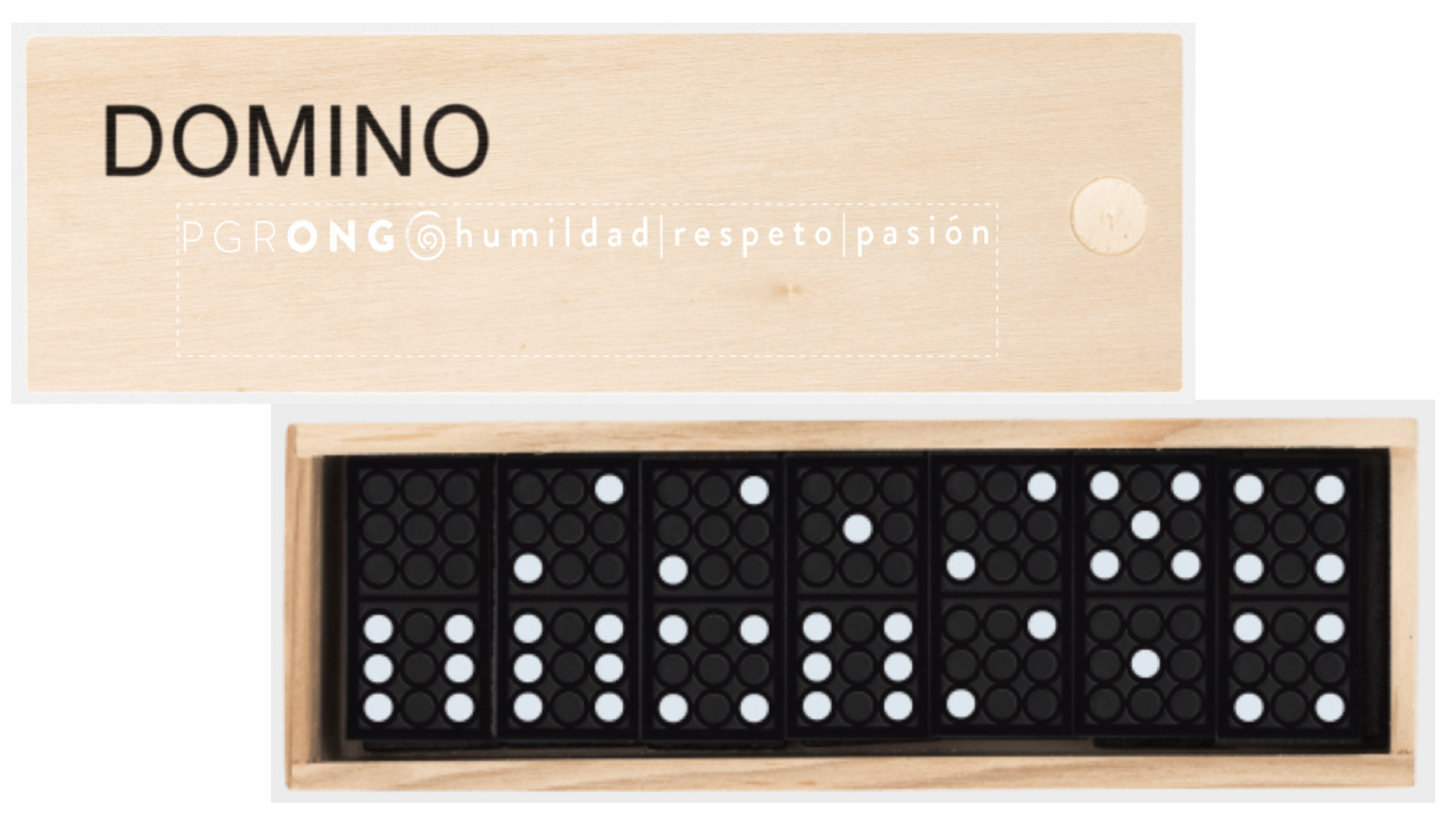PGR NGO Dominó
NEW!
PGR Dominó, with the purchase of this table game you will be helping to finance the charity projects of PGR NGO.
- Due to stock limitation, please note that this order is only available for shipments from December 12 - reception from December 20 (shipments to Spain) -
PGR NGO Dominó: 19,90€
TECHNICAL CHARACTERISTICS
Domino in wooden box.
Plastic pieces.
Dimensions 14.5 x 5 x 2.5 cms.
This article is from the manufacturer Midocean model Domino.
INFORMATION ABOUT THE GAME
To play dominoes you need 28 rectangular tiles. Each tile is divided into 2 equal spaces in which a figure from 0 to 6 appears. The tiles cover all possible combinations with these numbers.
It can be played with 2, 3 or 4 players or in pairs.
The objective of the game is to place all your chips on the table before the opponents and score points. The player who wins a round, scores points according to the pieces that the opponents have not been able to place.
HOW TO PLAY
Each player receives 7 tokens at the start of a round. (If there are less than 4 players in the game, the remaining chips are kept in the pot)
The player with the highest double chip starts the round (if 4 people play, the double 6 will always start).
If none of the players have doubles, the player with the highest chip will start.
From that moment on, the players will make their move, in turns, following the reverse order clockwise.
On his turn, each player must place one of his pieces on one of the 2 open ends, in such a way that the points on one of the sides of the piece coincide with the points on the end where it is being placed. For example, if at one end there is a tile that contains a 3 and at the other end there is another that has a 5, and the player has a tile to place that has a 2 and a 5, we will put the tile at the end where it appears number 5 and in this way we will have an end with a 3 and a 2. (The doubles are placed transversely to facilitate their location)
Once the player has placed the token in his place, his turn ends and he passes to the next player.
If a player cannot play, he must "steal" from the pot as many chips as necessary. If there are no chips left in the pot, it will be the turn of the next player.
The round continues with the players placing their chips until one of the following situations occurs:
- When a player places his last chip on the table, that player is said to have dominated the round. If played alone, the player who has won the round adds the points of all his opponents. Playing in pairs, the points of all the players are added, including those of the partner.
- There are cases where none of the players can continue the game. This occurs when the extreme numbers have already been played 7 times. At that moment the game is said to be closed. The players will count the points of the pieces that they have left; the player or pair with the fewest points is the winner and adds the points in the usual way. It could be the case of having the same points for what the player or pair that was a 'hand' would win or is closer to the player that was.
HISTORY
Dominoes is a board game that can be considered as an extension of the dice. Although its origin is supposed to be oriental and ancient, it became known in Europe in the middle of the 18th century, when it was introduced by the Italians. Its popularity in Latin American countries is immense.
Download our app now!
PGR APP





 Information about cookies
Information about cookies